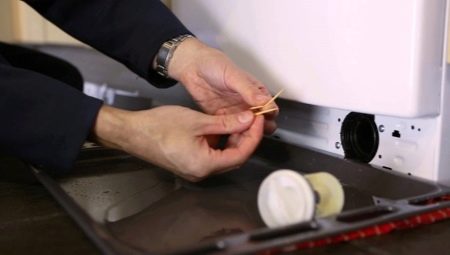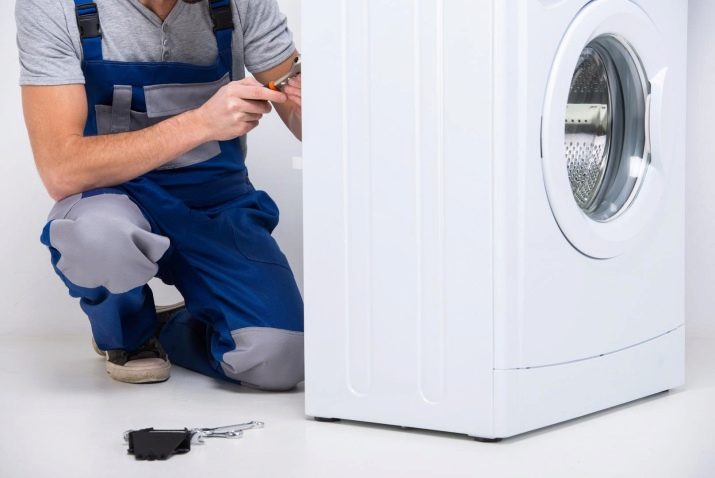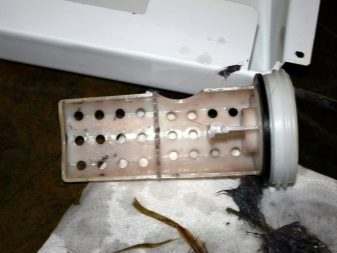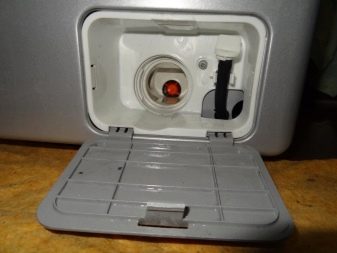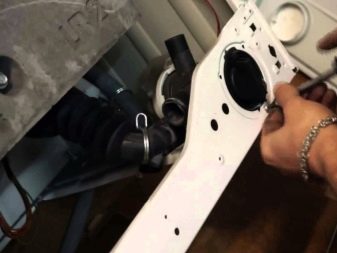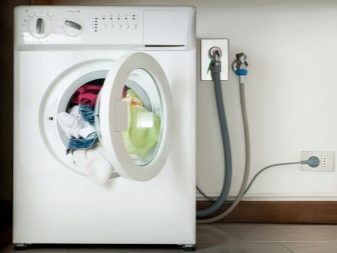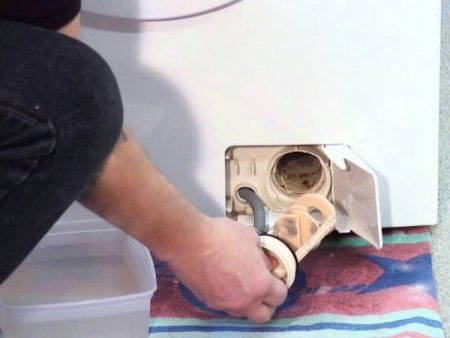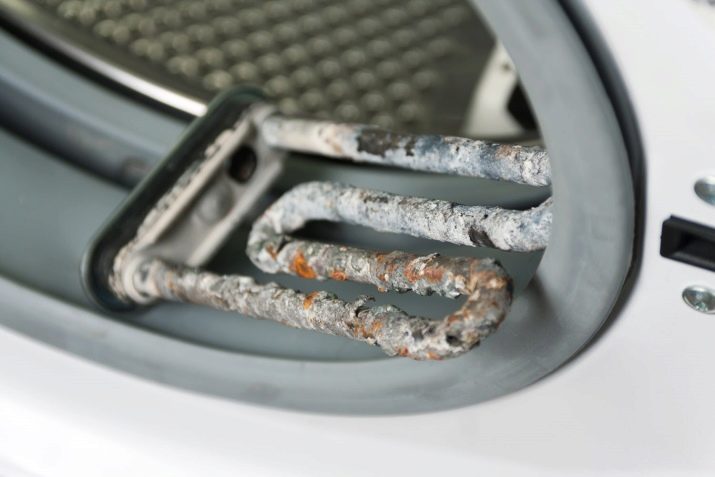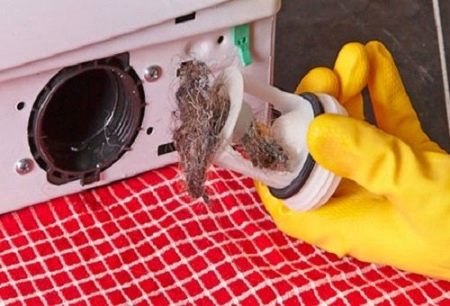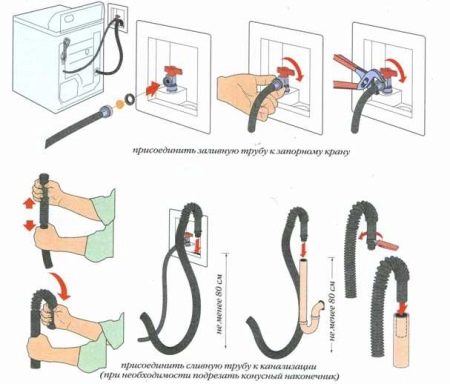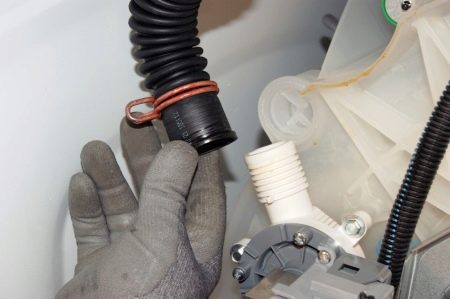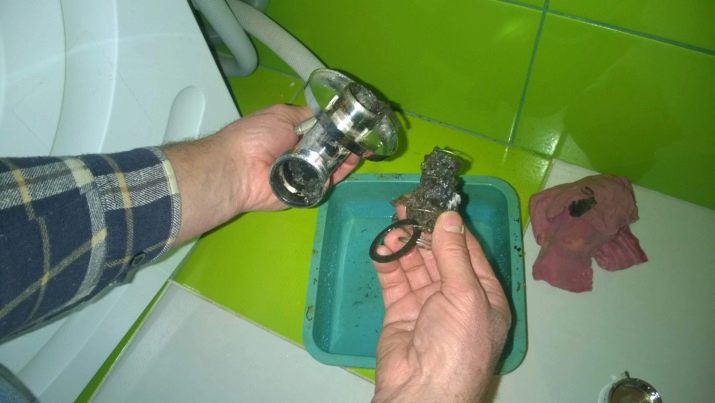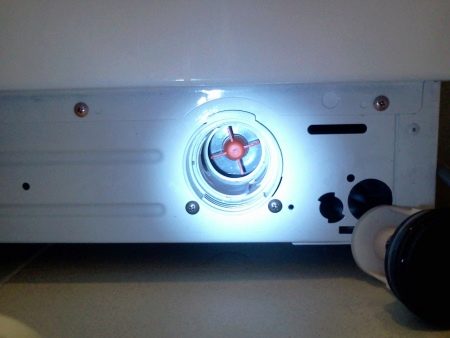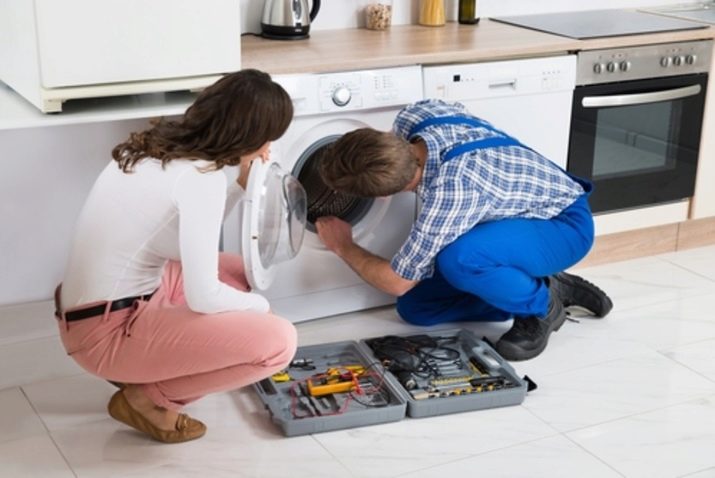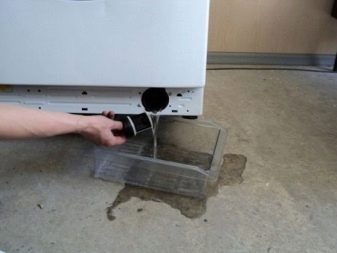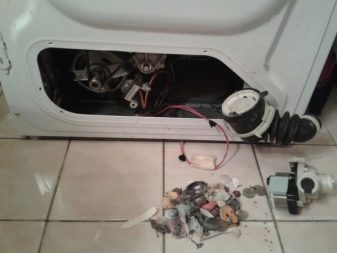The washing machine took over the function of cleaning, washing, rinsing and drying clothes and linen, thereby providing invaluable assistance to the hostesses. While things are spinning in the drum, you save time and effort, you can enjoy the extra minutes of rest or devote yourself to other household chores. However, modern automatic machines are a rather complicated electrical mechanism. Breakdown or failure of even relatively small parts can disrupt the operation of the entire washing unit.
Features
Many have heard that there is a filter in the washing machine that should be periodically cleaned from clogging and dirt. Some believe that this filter purifies water that enters the drum. There is an opinion that the filter, on the contrary, is in the place of the waste after washing, rinsing and squeezing the water.
Both of these opinions are correct.
In the automatic machine there are two filters:
- for water entering the drum;
- for merging water from the machine.
They are located in 2 different places, and both require timely cleaning. Most prone to contamination drain filter. However, periodically check the condition and permeability is necessary in both filter elements.
Types of pollution
Filters in the washing machine can become clogged and dirty for the following reasons:
- Rust and fine particles in the water. This applies to the filler filter, which purifies the water entering the washing machine. In most cases, fortunately, tap water has no obvious visible contaminants, but it is still necessary to check the condition of the filter at least once every 3-4 months. In addition, often due to constant contact with water, the filter element itself rusts, and this may impair its permeability and impede the flow of water to perform a washing or rinsing program.
- Limescale. It affects mainly the drain filter element. Limescale or scale is formed from the contact of the surface with high temperature water; it is this water that drains from the machine after the wash cycle. The reason is the high content of salts and minerals in the water, which evaporate at high temperature or boiling and settle on the surface and walls of dishes or household appliances. The higher the hardness of the water, the more intense the lime build-up is formed and accumulates.
- Mechanical trash. The largest share of contamination of the drain filter consists of various small items from clothes: garbage, sand, threads, small fasteners or decorative items, hair, animal hair. Naturally, these elements are washed out of linen and clothes during washing and leave in a stream of confluent water. Such clogs are the most intense and dangerous, because they can completely block the lumen of the filter element, and the washing machine will not be able to perform the drain operation.
Training
Before starting work on the removal and cleaning of the drain or filler filter, it is very important to perform preparatory operations in order to protect yourself during this process:
- Shut off the water supply to the washing machine.
- Disconnect the power supply of the automatic machine.
- After turning off the power, wait 10-15 minutes. The fact is that many models of washing machines, for example, the brand Indesit, are equipped with the function of protection against emergency power failure. After the cessation of electricity supply, such washing machines have a power reserve for a few minutes. This allows you to save the parameters of a given program or mode.
- Unscrew the hoses and gently drain the remaining water out of them. For this it is better to use the pelvis. Lower the end of the hose into the basin and shake it slightly. It is better to leave the ends of the unscrewed hoses in the pelvis until the completion of the cleaning of the filter elements.
Cleaning process
The element that filters the water entering the drum is not so polluted as the drain filter, but nevertheless it should be checked and cleaned at least once every few months. It is much more often to control the condition of this element if you have water in the water supply with visible contaminants, for example, elements of rust or muddy.
It should also be noted that not all models of automatic washing machines have a filler filter. You can find out about its availability in the manual for your typewriter.
After the preparatory operations, you can begin to unscrew and clean the filler filter:
- From the name of this element it follows that it is necessary to look for it in the place where the water supply hose is screwed to the typewriter itself. Most often this entrance is located on the rear wall above. After unscrewing the hose need to carefully remove the filter elementby unscrewing it from the socket with pliers or thick tweezers.
- Carefully inspect the condition of the element and filtering mesh. In the presence of rust or other contaminants, the filter should be rinsed under running warm water. and brush the old toothbrush. For better cleaning, you can use soap.
- If the filter is rusty, it can be soaked in citric acid solution. In a small enamel or plastic basin dissolve 50-60 g of citric acid in a liter of water. Leave the filter in solution for 10 minutes. Then intensively rub the rusted areas with a brush and rinse with warm water.
- After drying the filter, carefully screw it back into place.
The drain filter is located in the washing machine below and is usually covered with a plastic lid.
To extract and clean it up, do the following:
- The drain filter is slightly larger than the filler. It is a screw cap, and no tools are needed to extract it. Grasp the notches on the filter cover with your hand and rotate a few turns counterclockwise. Then remove the entire filter element.
- After removing the filter from the open hole, water may be poured down the bottom of the machine. Pre-lay a floor cloth or thick towel on the floor so that the water is absorbed. Or substitute low dishes. Usually a small amount of water is poured out, about 40-60 ml.
- After removing the item, clean the hole. To better clean it, take a lantern and shine inside. Usually quite large debris gets stuck in the hole, for example, coins, toothpicks, small clasps, zippers. You can remove objects from the hole by hand.
- Further, You can start cleaning the filter itself. Remove naktirutsya hair, threads, pieces of fabric, wool and other visible debris. Rinse the filter element under running warm water. To remove limescale, you can also soak the drain filter in citric acid solution as described above.
- After cleaning is completed, screw the filter back to its original position and close the cover.
Tips and tricks
Having checked and cleaned the drain and filler filter, try to follow the simple recommendations and rules that will keep the functionality of these elements of the washing machine in the future:
- A sign that the filler filter is clogged, are the following malfunctions: the washing time has greatly increased, the water enters the drum intermittently and in small portions, and the washing machine emits a strong hum while the water is pumping.
- It is necessary to immediately check the drain filter element, If your automatic machine has turned off during the spin cycle or water drain.Also a sign of clogging of the drain filter is an uneven discharge in small portions, an unusual buzz of the machine during the descent of water.
- Try to keep a lot of rubbish, sand, small objects in the washing drum. It is better to shake clothes with strong sand, earth or clay contamination over the bathtub or to brush off the dry dirt. Check the pockets of clothing, do not leave there small items, candy wrappers, paper, coins. These simple steps will help to significantly reduce the clogging of the drain filter.
- There are situations when the drain filter element is too dirty or there is a lot of scale on it. In such cases, it is most likely that it will not be possible to unscrew and remove it in the manner described above. You can try using a screwdriver to unscrew the entire drain pump. The machine must be turned on its side, remove the lower protective panel. At the bottom of the bottom of the case you will see a drain pump, which is located just behind the filter. Having unscrewed the pump, you can remove the filter not from the outside, but from the inside of the housing.
- To avoid serious damage and breakdown of your washing machine, promptly respond to the above signs of clogged filters. Even in the absence of noticeable alarms, filter elements should be regularly checked and cleaned, if necessary. The state of the filler filter should be monitored at least 1 time in 4 months. A drain filter, if there are no signs of water outflow from the drum, it is advisable to check at least once every 2 months.
To clean the filter in the washing machine yourself, see our video on how to do it.
